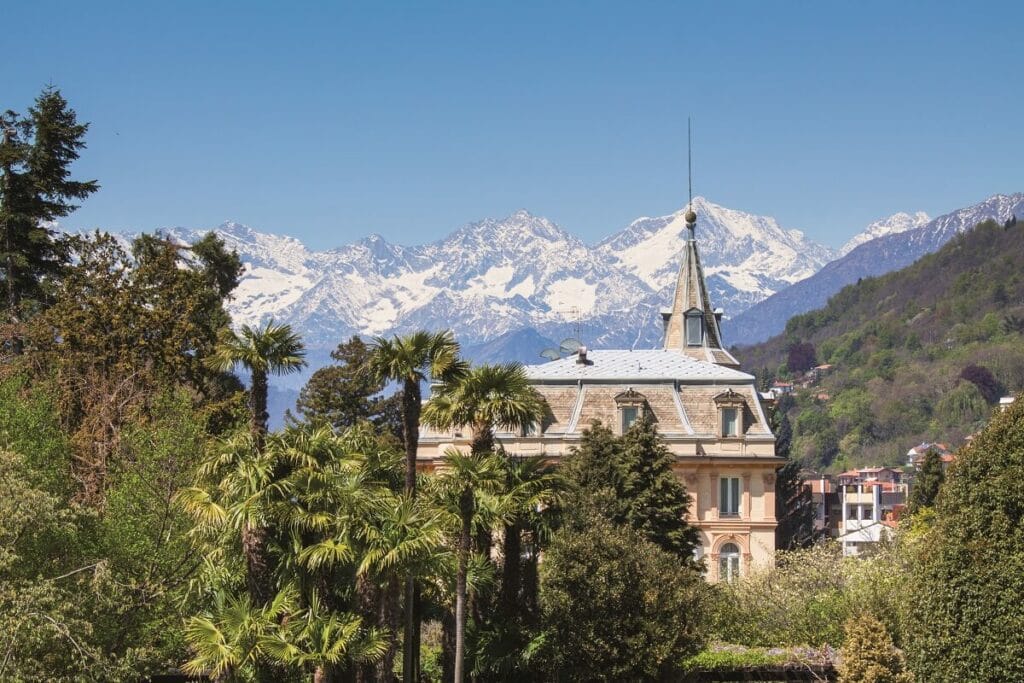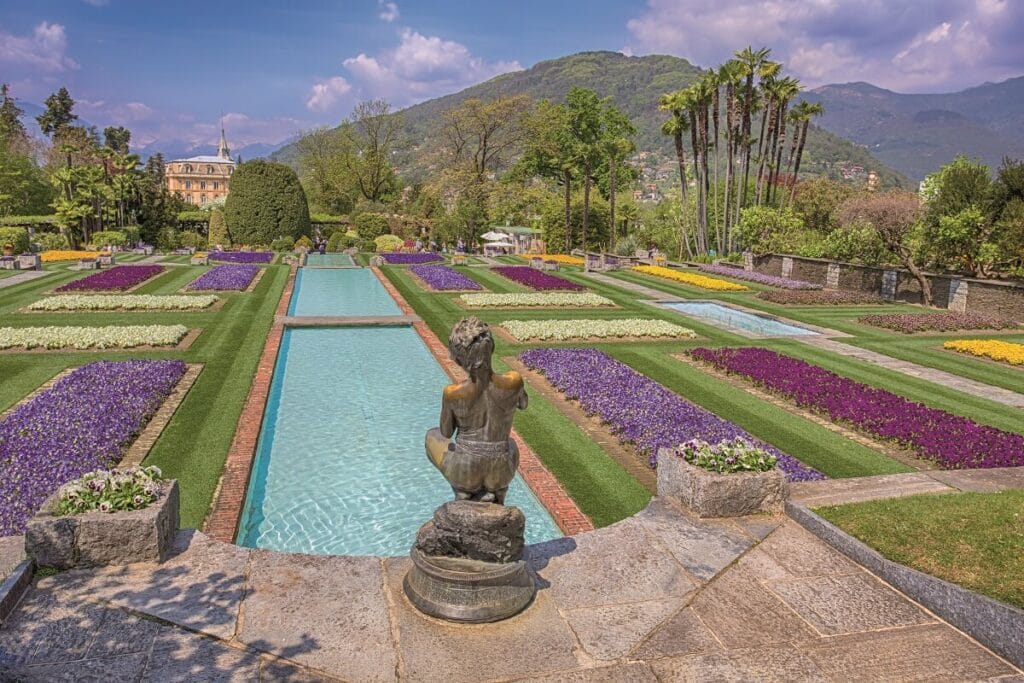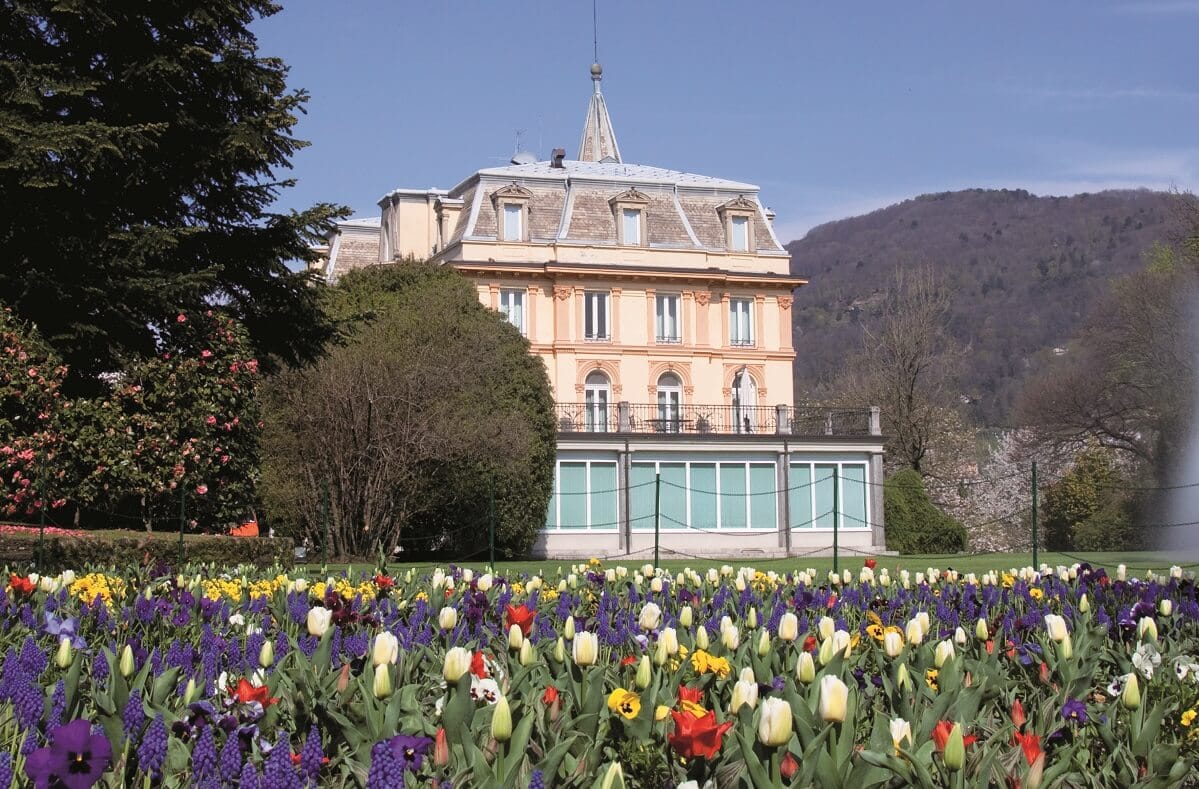While travelling on this legendary train, Scottish captain Neil McEacharn read in The Times about a house for sale. He bought it and created a botanical garden in its backyard
It looks like something from an Agatha Christie novel, minus the murders. There’s a legendary train resembling the one in Murder on the Orient Express, a villa like in And Then There Were None and a great garden like Miss Marple’s in the imaginary village of St Mary Mead. But we’re in Verbania, on the banks of Lake Maggiore, and the house in question is Villa Taranto, current seat of the Verbano-Cusio-Ossola province police station. Its gardens are open to the public, however, and definitely worth visiting. They contain over 20,000 species of plant and cover an area of around 160,000 square metres with 7 km of avenues.

The villa was built in 1870 by Count Alessandro Orsetti and designed by Swiss architect Augusto Guidini. At the turn of the century Rosamond Marke Wood – lady-in-waiting to Queen Elena and wife of Conte di Sant’Elia, Vittorio Emanuele III’s master of ceremonies – bought the villa. In 1929 it was once again put up for sale and, in 1930, wealthy Scottish shipping magnate Neil McEacharn read an announcement in The Times while travelling on the Orient Express after a stay in Venice. Unable to resist the house McEacharn made his way to Pallanzo. Despite finding the building’s lack of service spaces uncomfortable and the front garden not to his taste, McEacharn was struck by its panoramic location and, having first checked that the land around it was also on sale, he bought the house. Modernisation and transformation work on the villa lasted nine years after which McEacharn renamed it Villa Taranto, in honour of his ancestor Étienne Macdonald, made Duke of Taranto by Napoleon. The whole estate was then left to the Italian state in 1962.

The scotsman’s green fingers
The layout of Villa Taranto’s gardens were the work of Neil Boyd McEacharn. After buying the estate in 1930 he also bought up various plots of land around it and extended the park to its current 16 hectare size. He began by building the water tank which feeds the estate’s irrigation system. The work of Henry Cocker, an expert gardener hired in 1934, was crucial to the completion of the park over various decades.
The entranceway to the garden gives access to an avenue of conifers which contains plants from all over the world, with flowerbeds on the left side alternating colourful seasonal flowers. At the end of the avenue, on the right, there is a fern valley and then the Fontana dei Putti fountain. This is then followed by the maze, which features 36 ornamental tulip cultivars in spring, a total of around 80,000 flowers. The maze leads to the tropical and sub-tropical plant greenhouse from where the itinerary continues along a maple avenue hosting a multiplicity of species from all over the world. After the chapel, in which McEacharn was buried, the avenue continues to a valley dominated by a 35-metre-long footbridge from which bananas, broom and cypresses are visible. Next come the terraced gardens, the lotus pond and the blue garden and then, after the winter garden, the itinerary concludes with the temple, amphora staircase and belvedere.





